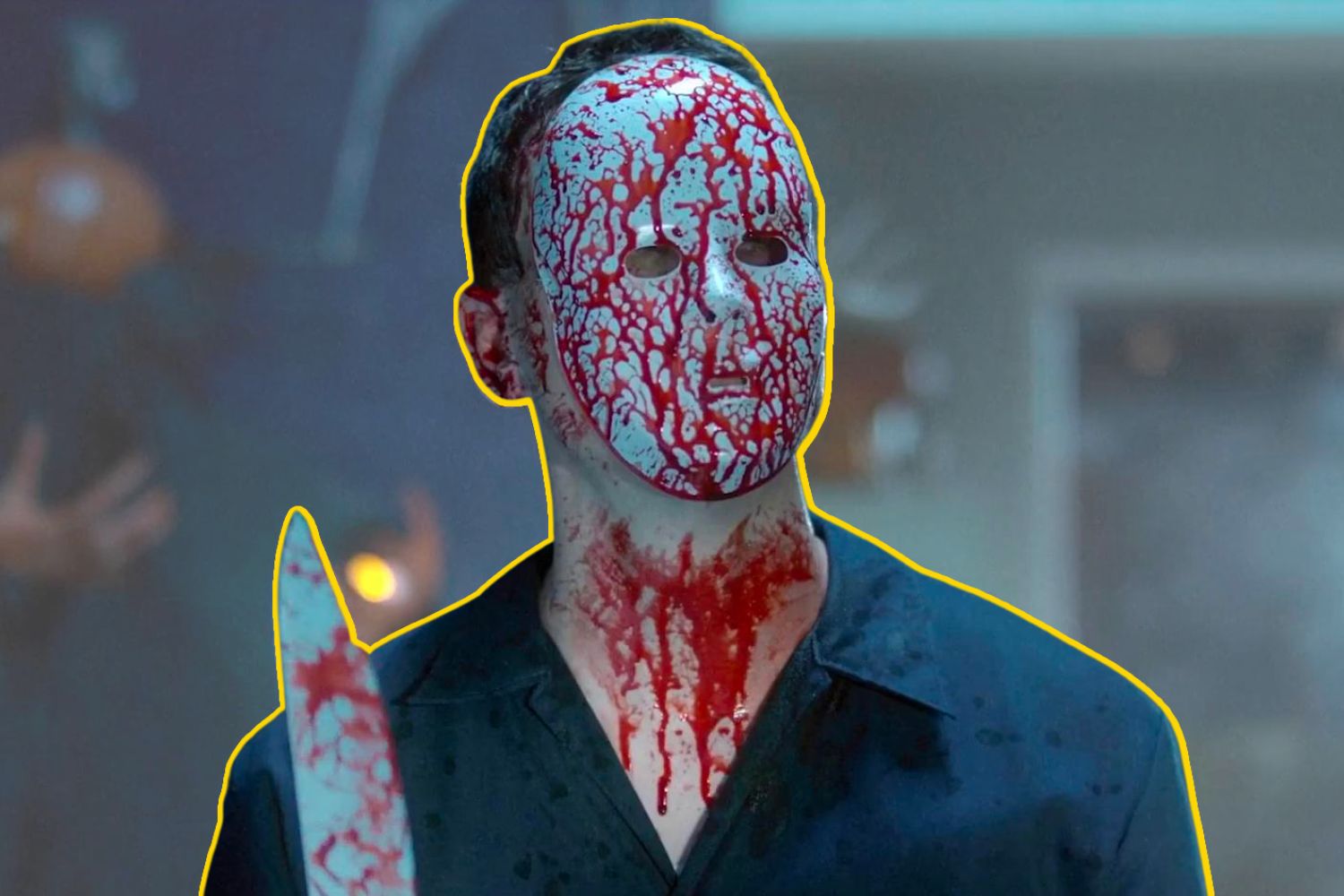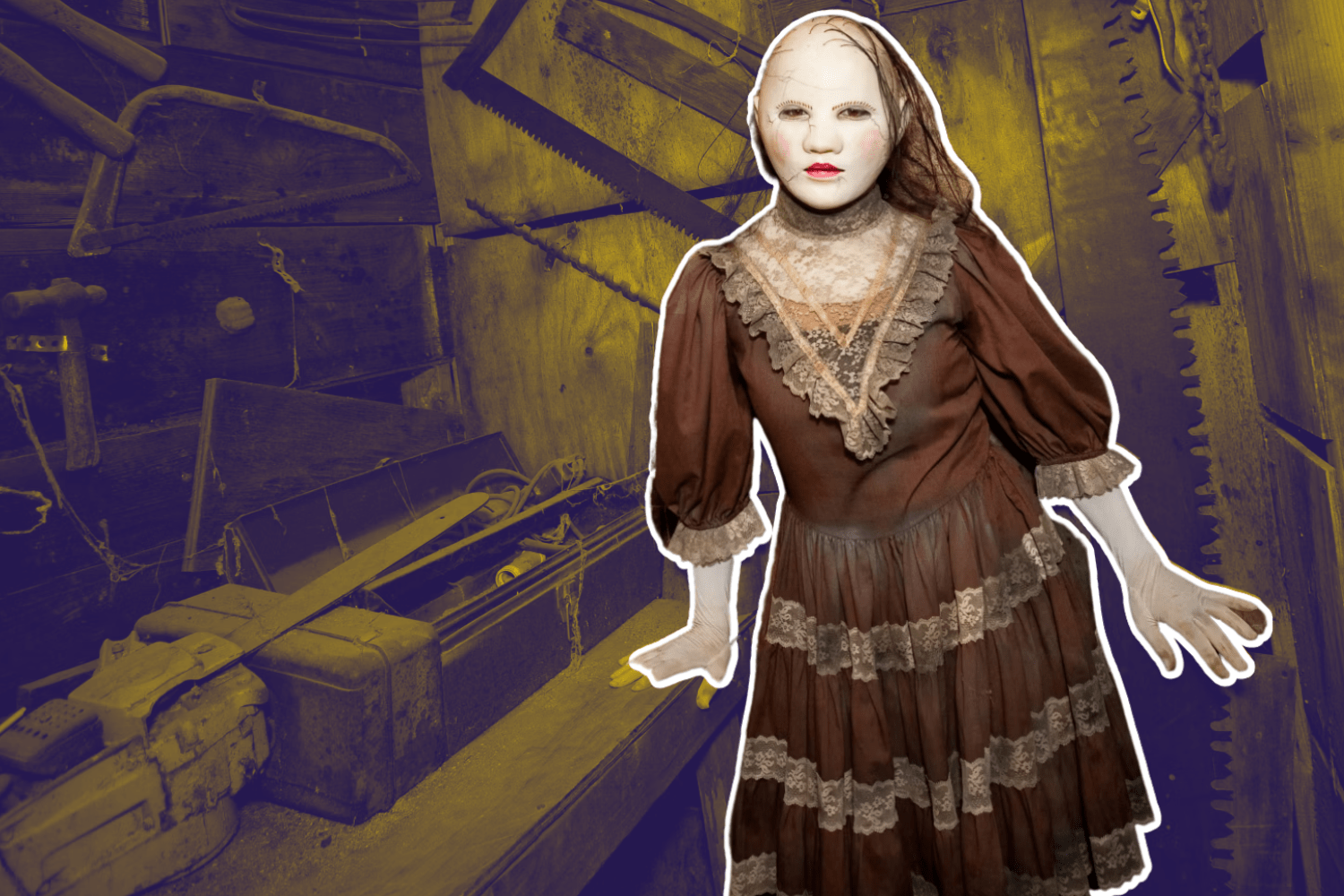Editorials
‘Scare Package’ Is a Meta-Horror Echo Chamber
May 25th, 2023 | By Melanie Moyer

Horror buffs will find themselves seen in Aaron B. Koontz’s horror-comedy anthology Scare Package. The film sparks memories of perusing the local video store for hidden gems, insisting your friends must watch a horror masterpiece they’ve never heard of, and picking something solely for the gnarly front cover. Ultimately, Scare Package is a love letter to horror and all the nostalgic emotions that come with it. But when does nostalgia overstay its welcome? And when does meta-horror stop being a useful exercise in genre analysis and start diluting the original concept to its most basic, repetitive, and homogenous parts? When does an ode to the genre become a tool for watering down the genre itself?
Most people will point to 1996’s Scream as the progenitor of the modern-day meta-horror subgenre. But it was preceded two years earlier by an early statement-of-concept by Wes Craven in New Nightmare, a new installment to the lore of Freddy Krueger that sees him take a step into the real world, terrorizing a number of actors and creatives from the franchise playing fictional versions of themselves. Two years later, the idea would get refined into an easier-to-digest, formulaic rendering where teens realize they’re in the midst of their own cat-and-mouse slasher film. Following Scream’s success were films like 2006’s Behind the Mask: The Rise of Leslie Vernon and 2011’s Cabin in the Woods (the latter of which had a clear influence on this film). It’s an admittedly fun genre whose room for assumed knowledge makes writing a little simpler, particularly for indie filmmakers. But it’s also, by its nature, stating a thesis about the genre that hasn’t necessarily been pushed back on.
Scare Package utilizes several shorts that explore different types of films — from the umpteenth installment in a slasher franchise to satanic cult films — found in the VHS rental store that is the movie’s primary setting. Several directors and writers populate the creative team, including Courtney and Hillary Andujar, Anthony Cousins, Emily Hagans, Noah Segan, and others. They run a sizable, if limited, gamut of the type of films that make up the genre and cover more ground than many meta-horror installments.
But Chad (Jeremy King) is the typical would-be guru of the horror world: a white man with a massive collection of physical horror media from decades past and the extensive knowledge to go with it, insisting on imparting his existing horror learnings on Hawn (Hawn Tran), a newbie to the genre. And while Hawn has his revenge — the film reveals he runs an experiment about horror stock characters and tropes for which he has kidnapped Chad to be the “genre expert” — the rest of the movie is still Chad attempting to live out a slasher film based on the established lore he, and people like him, have perpetuated.
The film does incorporate some new twists. Chad is woefully wrong about who he pegs to be the “final girl” and “slut” in his experiment group, admittedly poking fun at men of his type and the way women are portrayed. However, the characters still obey the confines of this worldview. It’s not that there are no stock assignments for these characters; it’s just that Chad misjudged who was who. The assigned “slut” is still killed in the end, as is her lot in horror life.
While entertaining and relatable for horror fans, Scare Package is not adding anything new to something that should be a larger conversation. In fact, it’s reinforcing what’s already there. Yes, slasher films employ repetitive stock characters; yes, the morally upstanding girl tends to see the light of day in the end; yes, the killer is seemingly indestructible. We know this, and we love watching the same thing happen over and over again, eight episodes into a franchise. But when you take that and mythologize it the way these films do, it stops being a helpful introspection and starts regressing all horror contributions to the mean.
On the one hand, the current golden age of horror films owes a great deal to the meta-horror reinvigoration of the 90s. Wes Craven’s work to develop a subgenre that let the audience in on the joke was, and still is to this day, downright enjoyable. But one thing meta-horror also does is reveal the limitations of the construct it’s working in. Characters realize the rules they are bound by and operate within them rather than push back on them. This genre reflexivity can be beneficial or increasingly diluting depending on how you respond to it, as meta-horror also reveals where the genre falls short. It can and should be a critique of where things stand in the genre for women, people of color, queer people, and non-western cultures. With films like this, whose existence pontificates the horror doctrine, we risk allowing the canon to shrink without meaningful additions that stretch the bounds of what is considered canon.
It’s not a mistake that most of Scare Package occurs in a VHS store. The nostalgia for the past, when the genre was far less diverse than it is now, is part of the meta-horror mythos. We’re reaching back to a time when, whether we realize it or not, several of the horror greats of our time would have been disenfranchised in the same. In a very real way, meta-horror films have become the Gatsby parties of horror: an object of entertainment for those privileged enough to enjoy the cosplay in the past without worrying about the realities of the time.
Like these past-harkening parties, slashers of decades past are fun to dive into if you’re willing to endure things like dated language and characters. Meta-horror has made it even more fun as you play along with the recognizable beats of the story. But the meta-horror of today, nearly 30 years removed from its first big moment, needs revitalization through a comprehensive look at what the horror landscape is today.
Metahorror as it presently exists is not a bastion for the genre-aware, analysis-seekers that it should and is often touted to be. New Nightmare was a film that came at the tail-end of a wayward franchise, igniting life and creativity into the story by being aware of its predecessors and what made the franchise scary in the first place. Scream was mindful of the faults and limitations of its slasher ancestors and invited an audience to poke fun along with it. Even Behind the Mask offered a meditation on how slashers portray violence as art. The state of today’s meta-horror hasn’t progressed to match the world around it, and Scare Package’s predictable plot is an example of a subgenre that needs to evolve to stay relevant and true to the audience it aims to connect to.


